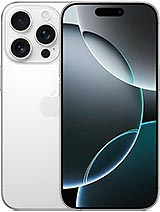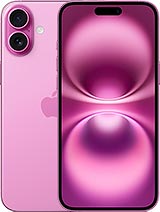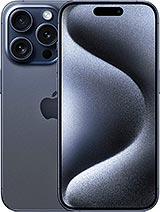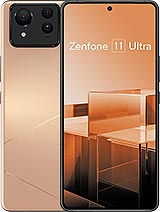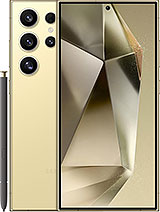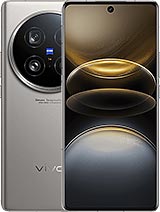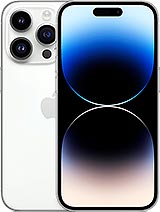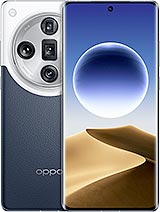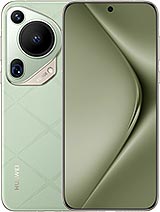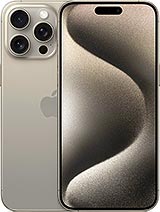Apple iPhone 16 Pro review

Apple iOS 18
Apple iPhone 16, 16 Plus, 16 Pro and 16 Pro Max come with the latest available Apple iOS 18 pre-installed. While Apple tried to present this new iteration as one of the biggest redesigns, it doesn't feel that big in day-to-day use. However, allowing for deep personalization options across the homescreens and interface does have the potential to make the UI rather unique and different, something which has been lacking on iOS through the years.
All iPhones will get at least five years of iOS updates, which has been an Apple thing for years.
You can check out our iOS 18 feature walkthrough for a deeper dive in what's new in this generation of the iPhone OS.
Connectivity
The iPhone 16 Pro and Pro Max come with a variety of network connectivity options depending on your region. In certain countries, Apple also offers satellite connectivity on the iPhone 16 models for emergency pings outside of cell range and Roadside Assistance via satellite (subscription required).

Emergency SOS and Find My via satellite do still have some regional limitations, too.
For local connectivity, the iPhone 16 Pro has dual-band Wi-Fi 7 as well as Bluetooth 5.3 with LE support. There is NFC on board for things like Apple Pay and Name Drop contact sharing. It also has a second-generation Apple Ultrawideband (UWB) chip. It enables precise Find My with directional arrows and has up to three times increased range compared to the original Apple U1 chip. You can also use precision finding in a crowd with Find My Friends. We should note that the UWB chip and its functionality are not available in every market and are disabled in some countries due to regulatory issues.
The USB-C port on the iPhone 16 Pro models adheres to the USB 3.2 standard and supports up to 10Gbps transfer speeds - compare that to the USB 2.0-compliant vanilla iPhone 16s and their 480Mbps data transfer cap.
Video output is supported as well (Display port DP) via Type-C Alt mode, which means that most standard Type-C hubs with a video interface should be able to get an image from the phone. By default, you get a mirror of the display without any other fancy options like a dedicated desktop mode or anything of the sort. In other words, it does a simple screen mirror for the UI.
All iPhone 16 models also support USB Host mode, and we successfully hooked up a mouse and keyboard. The keyboard started working instantly but getting the mouse to pick up and actually show an on-screen cursor required enabling the Assistive Touch option in Settings. USB thumb drives, card readers, and hard drives work fine and automatically mount and appear in the Files app. Compatible external storage is also recognized by the Camera app, and you can output ProRes videos there.
Various USB-C game controller/phone holders are supported, too. Anything that works on Android via USB-C should work on the new iPhones as hassle-free.
Performance, benchmarks, stress tests
The Apple iPhone 16 Pro and 16 Pro Max employ the most powerful Apple silicon in a phone to this day - the Apple A18 Pro. It has a six-core CPU, six-core GPU and 8GB RAM.
Apple promises up to 20% better sustained performance on these phones compared to their predecessors thanks to improvements in heat dissipation and efficiency. The A18 Pro is built on a 3nm process and has a new 16-core Neural Engine. There's a 17% increase in total system memory bandwidth, which also benefits the 6-core GPU which is up to 20% faster than the previous generation.
The improved new 6-core CPU has two high performance cores clocked at 4.04GHz and four efficient cores working at 2.2GHz. Apple says this processor is "the fastest in a smartphone", and that its cores can run the same workload as the iPhone 15 Pro 15% faster while using 20% less power.
The Apple A18 Pro has a faster GPU than the A18 inside the iPhone 16 but appears to feature the same processor.

We have decided to add some of the most recent Android flagships for comparison, even if the cross-platform benchmarks should always be taken with a significant dose of skepticism.
The new Apple A18 Pro CPU inside the iPhone 16 Pro does score about 15% more than the A17 Pro inside the iPhone 15 Pro.
There is also between 15% and 20% jump in GPU performance depending on the 3D test.
You can also see the massive jump between the different generations of NPUs inside the iPhone chips via the Geekbench AI scores.
Apple has promised better heat dissipation for this generation of iPhones and thus - better sustained performance. And it has delivered! The CPU scored 78% of stability. The GPU stability has increased from 74% (same test, iOS 18) to 90%, which is lovely.
The Apple A18 Pro is not a ground-breaking improvement, it is your typical incremental upgrade with minor boost across the board. But we are surely happy with the improvements, especially the better sustained performance, and it is safe to say the iPhone 16 Pro is one of the most powerful smartphones out there, be it for gaming, video editing, and more.
Reader comments
- Anonymous
- 06 May 2025
- y6W
i hope you also add how fast the camera drains the battery
- rule
- 24 Apr 2025
- YUU
fake..some android more expensive than iphone..and experience more better than ios..use both,and android miles better than ios🤣
- Coolio
- 10 Apr 2025
- 3yN
So you put your money in the bin then?

